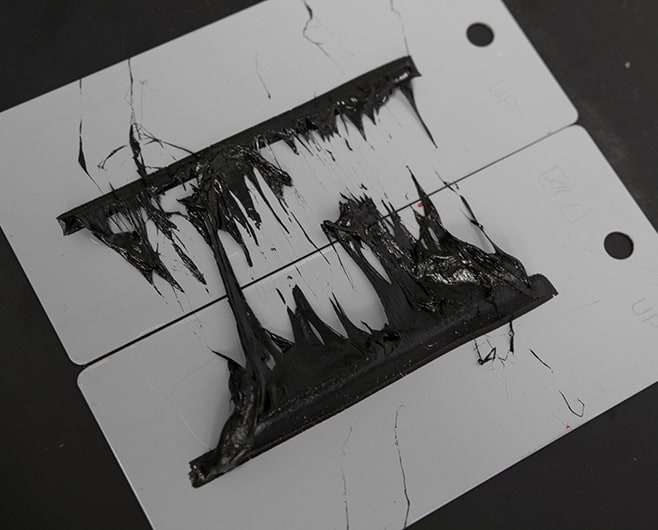How Can You Tell the Quality of Rubber?
Quality of Rubber: Rubber Testing
Ensuring the quality of rubber products with rubber tests is extremely important to manufacturers. High standards of quality control make sure customers get the highest functioning rubber products that perform at or above expectations. At the least, this reflects positively on the manufacturer. At the most, it protects the end-users. In critical rubber applications like medical o-ring seals and rubber aerospace parts, high-quality rubber and high-quality synthetic rubber are crucial for safety. Rubber, as sturdy and tough as it is, is affected by its environment over time. Understanding how a rubber product will perform in its end-use conditions is critical to assessing the quality of the material. After all, if rubber is strong in average temperatures, but rubber testing reveals that it becomes brittle at low temperatures, it will not be suitable for low-temperature applications. For this reason, rubber analytics and testing are processes unique to each manufacturer and application. The proper course of testing will depend on industry and product goals. Before it gets to its end use, it’s important to understand the qualities of rubber under specific conditions.
Types of Rubber Testing
Rubber testing laboratories like ACE use a wide variety of rubber tests to gather data and tell you about rubber. While the specific tests you need may vary depending on your product and end goals, below are some of the more common rubber testing methods used to determine rubber quality.
Specific Gravity
Specific gravity testing helps manufacturers know if they used all the right ingredients. Specific gravity measures the ratio of the density of a mass to an equal volume of deionized water. How does it work? Well, different rubbers have different specific gravities. To find the specific gravity of a rubber sample, ACE uses test method ASTM D297 using the hydrostatic method. Since rubber materials are often priced by the pound, a lower specific gravity or density means a higher volume per pound of material. You can use your material’s specific gravity measurement to compare materials and identify processing concerns. As far as quality concerns go, you can compare your material’s actual specific gravity measurement to theoretical measurements to evaluate mix quality and adjust as needed.
Tear Resistance
Tear resistance is a physical test method that measures your rubber specimen’s ability to withstand tearing. What factors impact a material’s tear strength?
- Mechanical fibering (surface cracking)
- Stress distribution
- Strain rate
- Material sample size and dimensions
With so many factors affecting the tear resistance of rubber, it is important to work with an experienced rubber testing laboratory to ensure thorough, repeatable results. Testing should be customized to fit the conditions of your product’s end-use environment. With careful tear resistance testing, you will gain insight that helps you predict its point of failure during end use. If the rubber material is not strong enough, this insight may also help you make the necessary adjustments for a product that holds up under stress.
Tension Testing
Tension testing, or tensile testing, determines how your material will behave under tension. The test method returns data points about tension and elongation, making it simple for you to understand whether or not the material is well-suited for the end use at hand. ACE uses test method ASTM D412 to test many properties, including all commonly referenced tensile and elongation properties. During this method of testing, your sample is subjected to tension until failure. Knowing the failure point for your material is an essential part of understanding the quality of your rubber.
ANAB-Accredited Laboratory
Rubber testing results are only as trustworthy as the lab that produced them. When determining the quality of your rubber, it’s important to work with a rubber testing laboratory you can trust. How do you know if a lab is high quality? Look for ANAB (ANSI National Accreditation Board) accreditation. ANAB-accredited laboratories must consistently meet the organization’s standards. This assures the lab uses high quality equipment and provides repeatable, accurate results. ACE’s rubber testing lab is ISO/IEC 17025 accredited by ANAB. Our team of experienced technicians is committed to using high quality tests to provide valuable insight into your rubber materials. We don’t rest on our prior accomplishments. We value efficient communication, work with integrity, and build relationships based on shared goals and passion for innovation. Looking to partner with a rubber testing lab you can trust? Contact us today.
In the news
What Is FDA CFR 21 177.2600 and How Can I be Compliant?
The consumer goods industry is highly regulated, especially regarding food safety. If you’re making any kind of rubber or polymer part for machines that process food, you need to understand and comply with the FDA’s 21 CFR 177.2600 regulations. This standard is often...
What is Crack Bridging?
Crack bridging is the flexible substance that seals cracks in concrete, asphalt and other substrates. It may also be referred to as crack or joint sealant. Both cold- and hot-applied crack bridging materials are commonly used. Asphalt plug joints are a type of crack...

